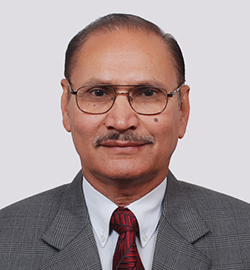Columns
Tokha’s untapped tourism opportunities
Tokha is an open museum of artistic houses, temples, sculptures, traditional dances and music.
Chandra P Bhattarai
If anyone is interested in knowing about a place with all the prospects for the development of the tourism industry but has been deprived of its real-life benefits, Kathmandu Valley in Nepal could be a convincing example.
This valley, comprising the three major ancient cities of Kathmandu, Lalitpur and Bhaktapur, has the quality to be one of the most popular destinations for heritage and cultural tourism in the world. Originally inhabited by the Newar community, this place is home to the renowned Newar culture and heritage. Its ancient wood, metal and stone architecture; numbers of Hindu temples and Buddhist monasteries, year-round festivals, unique cultural dances and a rich tradition of exclusive Newar food and drinks collectively have the power to attract tourists from all corners of the world. There are several satellite towns with rich Newar culture in the valley, Tokha is one of them.
Kathmandu civilisation
With a history of over 1,500 years, Tokha is home to the ancient Kathmandu civilisation dating back to the Lichchhavi dynasty. Historians consider the Lichchhavi period as the golden era in Nepal for its good governance system and optimal enrichment of the arts, culture, language, literature and architecture. The settlement's name Tokha is the combination of two Newar words tu and khya meaning sugarcane and field respectively. As sugarcane used to be produced in abundance locally, Tokha has been historically famous for chaku, a vital immunity-building food item consumed in winter. Made from sugarcane juice, it is a sweet ingredient in the delicious and healthy Newar dish yomari.
This ancient town now forms two of the present-day Tokha Municipality's 11 wards. Several surrounding villages, all having social and economic characteristics different from that of Tokha proper, have been incorporated to make the municipality's other wards. As such, though the ancient town is obviously a small part of the newly formed municipality, its importance in terms of culture and heritage is not small at all.
Tokha is an open museum of artistic houses, temples, sculptures, traditional dances and old-fashioned musical instruments. Like in any other ancient settlement in the valley, it has several beautiful houses built in a well-planned way even then. Its temples are both in the pagoda and stupa styles. The temple premises of goddess Chandeshwori are known as yagyasthal of Daksha Prajapati where Satidevi was believed to have jumped into the fire. Likewise, the temples of Saraswati, Masankali at Bhutkhel Chaur, Taleju, Bhimsen, Sapan Vinayak and several other gods and goddesses are evidence of the town's religious history. Bhutkhel Chaur is believed to have been a battleground of demons and gods in earlier days. Like Kathmandu, Tokha also has its own living goddess Kumari.
During festivals, one can see the lakhey dance, a unique and popular cultural dance performed on the streets and squares not only in Kathmandu Valley but also in other towns of Nepal inhabited by Newars. During the Gai Jatra, Indra Jatra, Biska Jatra and Krishnashthami festivals, dancers dressed in traditional lakhey costumes and masks dance beautifully. The classical snake dance is another attraction of Tokha. Several beautiful ponds and antique stone spouts (dhunge dhara), public places (dabali) and stone inscriptions (shilalekh) add value to Tokha's culture and heritage.
An important characteristic of ancient Nepali society, particularly in Newar settlements, is the management of temples and other community groups through the guthi established for specific purposes. This practice is still distinctly visible in Tokha. Local community groups known as khala are supported by the municipality in the preservation of traditional dances and musical instruments. Traditional instruments like the dhimay, flute, dhaa and bhusyaa played during jatra times are integral parts of the local culture. However, this ancient settlement has not been able to benefit economically from its rich culture and heritage. At a distance of hardly 10 km from the heart of the national capital, Tokha has immense scope for the development of domestic and international tourism.
Each of the village development committees merged lately to create Tokha Municipality has its particular strengths in tourism. This industry's beautiful characteristic of vast backward and forward linkages with several other economic sectors clearly justifies the development prospects in Tokha. The local agriculture, horticulture, livestock, trade, manufacturing, handicrafts and transportation sectors will grow together with tourism. The trekking trail from Chandeshwori to Baudeshwor along the border of Shivapuri National Park, if developed properly, can contribute significantly to the economic prosperity of the surrounding Tamang, Newar and other settlements.
Income generation
While the existence of natural, historical, archaeological or economic assets is a necessary condition for the tourism industry to flourish in any particular area, it is not a sufficient condition. The process of linking these opportunities to employment and income generation and subsequent local economic growth requires adequate knowledge of the industry, proper management skills, and motivated and committed entrepreneurship in the community. Though there have been some efforts at the local level to preserve Tokha's centuries-old artistic and cultural treasures, any effective mechanism to link them with income generation activities in the community is grossly absent.
Tokha is not alone in possessing such untapped potential. There are several other places with similar backgrounds in and around Kathmandu Valley. Neither the communities nor the local governments have the proper realisation of their own huge strength for sustained local economic development through the promotion of tourism. The private sector obviously has the driver's role in the transformation process. The municipality as the resourceful and powerful local entity has the greatest responsibility to facilitate it. A long-term vision for the development of local tourism should be in place first. It paves the way for achievable mid-term plans, realistic programmes and private-public partnership in needy areas. Any journey is meaningful only when the destination is clearly known to the travellers beforehand.




 13.12°C Kathmandu
13.12°C Kathmandu















